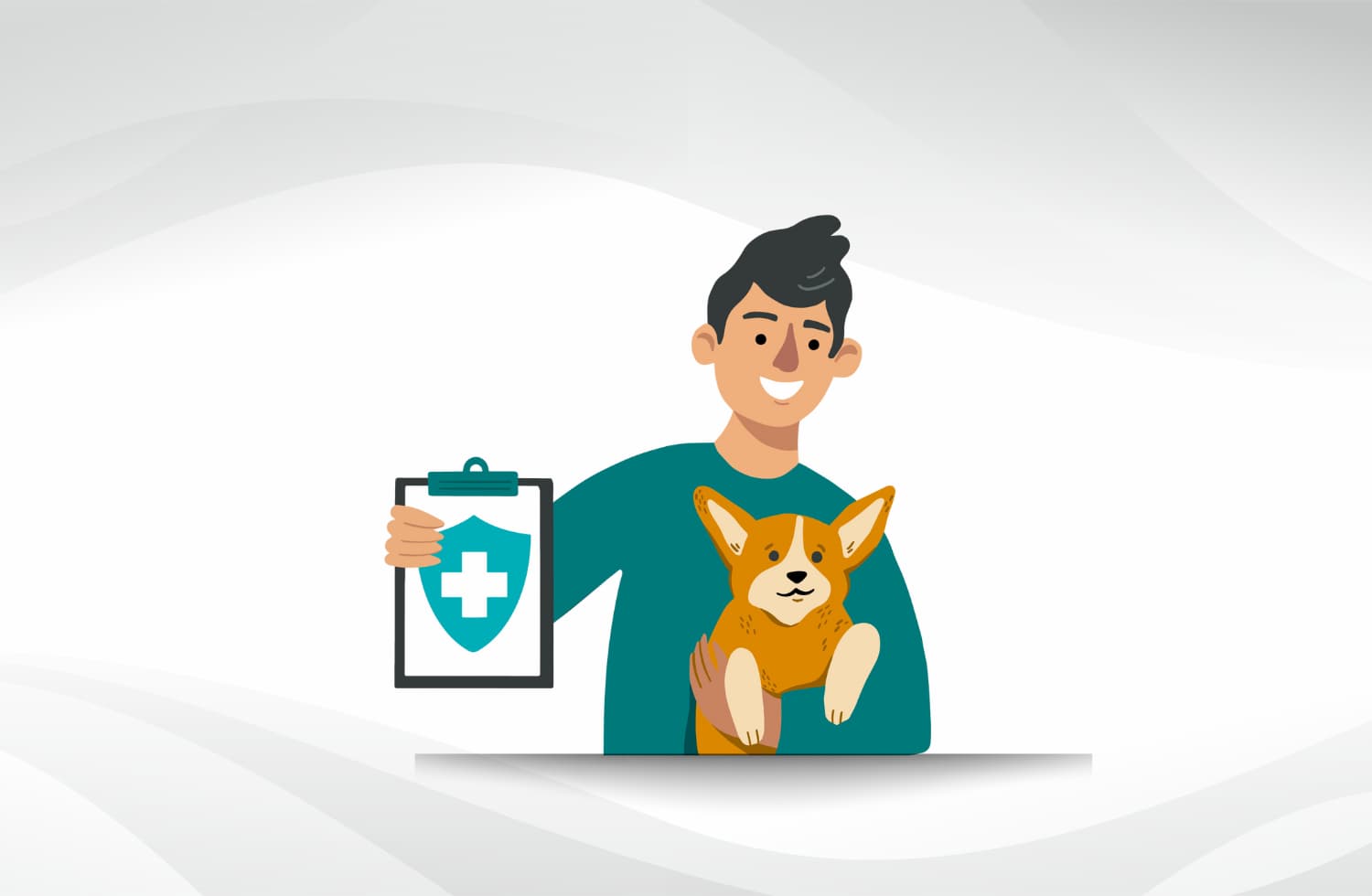A positive aspect of the COVID-19 pandemic is a significant increase in pet adoptions during and after the lockdowns. As people experienced isolation and loneliness, they became more dependent on their pets for companionship and began to view them as family members rather than mere property. In 2020, when remote work peaked, people were eight times more likely to adopt a pet.
But the adoption of pets is much more than bringing them home. Pets need to be fed, bathed, and groomed regularly. In addition, since their health concerns differ from humans, regular check-ups with veterinarians are necessary. At times, surgery and hospitalization are required when pets become sick. While traditional insurance covers health issues related to humans, pet insurance is a boon for owners looking to reduce the health expenses of their pets.
The pet insurance market is currently valued at $8.6 billion in 2023, projected to grow at a CAGR of over 7% between 2023 and 2032. As a result, this growing industry is attracting a lot of entrants who promise disruption, which includes companies like:
- VIU by HUB, a digital insurance brokerage platform, has partnered with Fetch Pet Insurance to expand personal insurance offerings on its platform.
- PetMed Express, an online pet pharmacy, partnered with Pumpkin Insurance.
- FirstVet, a provider of on-demand video consultations for pet parents, has partnered with Fletch to embed a pet insurance marketplace for its US users.
- More Than has partnered with PitPat, a company specializing in dog wearables, to aid their customers in managing and tracking their dogs’ activity.
As the pet insurance industry expands, technological advancements are becoming increasingly important in shaping the industry. For example, with the development of pet technology, insurers can provide plans tailored to the specific requirements of each pet. In addition, data analytics can aid insurers in identifying trends and patterns in claims data, helping them make more educated pricing and coverage decisions.
Market Drivers of Pet Insurance
Customer Dynamics
The “work from home” era is here to stay despite the pandemic receding into the background. During the pandemic, interactions among humans were limited. However, as humans are “social animals,” they crave companionship, and pets have filled a void as their trusted companions.
Pet ownership is increasing, with 70% of households in the US owning a pet in 2021. The dynamics of pet ownership have shifted, with millennials emerging as the largest cohort of pet parents, accounting for 32% of the total populace.
The trend of pet humanization is on the rise. Pets have become part of the family and there is an increased awareness about the pet’s mental and physical well-being, followed by a high propensity to spend.
With an upsurge in pet humanization, people are willing to spend on quality food, medical care, and added services for their pets, which is fuelling the growth of the pet insurance industry. At the end of 2021, there were nearly 4.41 million insured pets in North America, representing a penetration rate of 2.5%.
Pet Technology
Technology is evolving the way people care for their pets. For example, wearables transform how pet parents perceive their pet’s health, safety, and overall well-being. The wearables market includes GPS trackers, activity monitors, pet cameras, motion sensors, etc., which can be used for medical diagnosis and treatment, tracking, behavior monitoring, etc.
Start-ups and large retailers are exploiting the trend of pet humanization to offer a variety of disruptive products and services ranging from fitness trackers to insurance to human-grade fresh meals.
Pet insurers can use data analytics to reimagine their business models, elevate customer experience, and generate insightful data from pet technology.
Key Focus Areas for Insurers
Product Innovation
The insurance products available today need fine-tuning of unique risk profiles. Pet parents are looking for hyper-personalized products for their furry babies, which would grant them peace of mind. Unfortunately, minimal underwriting parameters are considered, leading to insufficient evaluation or assessment and preventing insurers from sorting risk groups appropriately.
Data analytics can help insurers drive product innovation. By analyzing the pet breed and their age, health history, and genetics data, insurers can identify health issues and customize policies to suit individual pets and pet parents.
Revamp Distribution
With millennials dominating the customer space, insurers need to re-evaluate how they reach pet parents through traditional distribution channels. Online purchases dominate most pet insurance buying. To introduce new distribution channels, insurers can explore partnerships with pet care companies in diet, grooming, fashion, toys, wearables, and accessories. Insurers should also consider collaboration with veterinarians, breeders, and animal shelters as potential avenues.
User Experience
Millennials now account for about 32% of pet parents. They are followed closely by boomers and Generation X. They are more tech-savvy and always looking for digital services and enhanced customer experience. Traditionally, customer interaction was primarily focused during claims and renewal, but now insurers must prioritize engaging with customers throughout the policy lifecycle. To achieve this, insurers must leverage data analytics to improve their customer segmentation and identification methods to understand better their customers’ personas and buying journeys.
Claims Innovation
Traditionally, the claims journey has been frustrating for insurance companies, and pet insurance is no exception to this woe. The current claims process could be more efficient, relying heavily on human effort for decision-making and processing of bills. And with the availability of advanced medicine and procedures, pet parents opt for sophisticated treatments, increasing claims costs. Depending on the issue, the cost of treatment can amount to thousands of dollars on average. For example, the average price of treating a case of “ingested foreign object” is around $3,500.
In addition, creating fake vet bills or exaggerating the costs of procedures are common occurrences. Insurers can speed up their claims systems, reduce costs, and improve customer satisfaction with the help of data analytics. Insurers can also detect patterns of fraud by analyzing data on claims history, pet health, and other characteristics.
Data Analytics and Wearables
Big data and AI-driven automation are commonplace in health and automobile insurance. A similar opportunity is now up for grabs in the pet insurance space. Analytics has generally been used to drive meaningful insights for insurers across the entire customer lifecycle. However, with the introduction of pet tech, like wearables, the scope of analytics has expanded rapidly. As a result, insurers can explore this untapped data space and embrace a more proactive approach to managing risks.
Key Data Analytics Use Cases
Analytics-Driven Underwriting
Data analytics can be used to analyze breed-, genetic-, and health-specific data to build a standardized database for quality underwriting. Predictive underwriting can help insurers identify unique risk profiles for better risk assessment.
Claims and Fraud Analytics
Insurers can uncover patterns and make more accurate claims determinations by analyzing claims data using machine learning algorithms. Insurance firms can detect patterns of fraud by analyzing data on claims history, pet health, and other characteristics.
Indemnification to Prevention
Pet wearables can track and monitor health and activity data 24 x 7 to get better insights into a pet’s health, exercise routine, calorie burn, sleep patterns, etc. Advanced and predictive analytics can generate health goals for individual pets per their risk profile and promote wellness programs. As a result, healthy pets are less likely to require frequent visits to the vet, resulting in fewer claims and reductions in premiums.
Conclusion
Pet insurance is a data-driven offering. As technology advances, we expect more innovative solutions to emerge in the pet insurance and pet care sectors. Insurers should use AI and machine learning to build intelligent automation to support their underwriting and claim processing operations. They should also leverage data analytics to innovate their offerings and reimagine their business. Insurers that can join the cause of data and make the best out of it will position themselves as leaders in the market.
We at LatentView Analytics are uniquely positioned to help clients achieve synergies and success by delivering critical analytical insights through our deep skills in Domain, Data Science & Data Engineering. To stay ahead in the game, we can help clients start their data analytics journey today. To learn how your business can leverage data, connect with us at consultingservices@latentview.com.
References
- Pet Insurance Market – By Policy Coverage (Accident only, Accident & Illness, Others), By Animal (Cat, Dog), By Provider (Pubic, Private), By Region – Global Forecast to 2032, https://www.gminsights.com/industry-analysis/pet-insurance-market#:~:text=Industry%20Statistics,CAGR%20between%202023%20and%202032
- Fetch Pet Insurance joins forces with VIU by Hub to expand personal offerings, https://fintech.global/2023/03/15/fetch-pet-insurance-joins-forces-with-viu-by-hub-to-expand-personal-offerings/
- PetMed teams up with Pumpkin Insurance to offer pet insurance solutions, https://fintech.global/2023/02/14/petmed-teams-up-with-pumpkin-insurance-to-offer-pet-insurance-solutions/
- FirstVet teams up with Fletch for embedded pet insurance marketplace, https://fintech.global/2023/01/24/firstvet-teams-up-with-fletch-for-embedded-pet-insurance-marketplace/
- More Than launches fitness trackers for pet insurance line, https://www.insurancetimes.co.uk/news/morethn-launches-fitness-trackers-for-pet-insurance-line/1430045.article
- Facts + Statistics: Pet Ownership and Insurance, https://www.iii.org/fact-statistic/facts-statistics-pet-ownership-and-insurance#Pet%20insurance
- 2021-2022 APPA National Pet Owners Survey, https://americanpetproducts.org/Uploads/NPOS/21-22_BusinessandFinance.pdf
- Pet Insurance in North America, https://naphia.org/industry-data/
- Pet Wearables Market, https://www.factmr.com/report/197/pet-wearables-market
- How Much Does A Vet Visit Cost? https://www.forbes.com/advisor/pet-insurance/how-much-does-vet-visit-cost/
- Pet Insurance Fraud: Claims & Cases, https://anthonyjones.com/pet-insurance-fraud/



